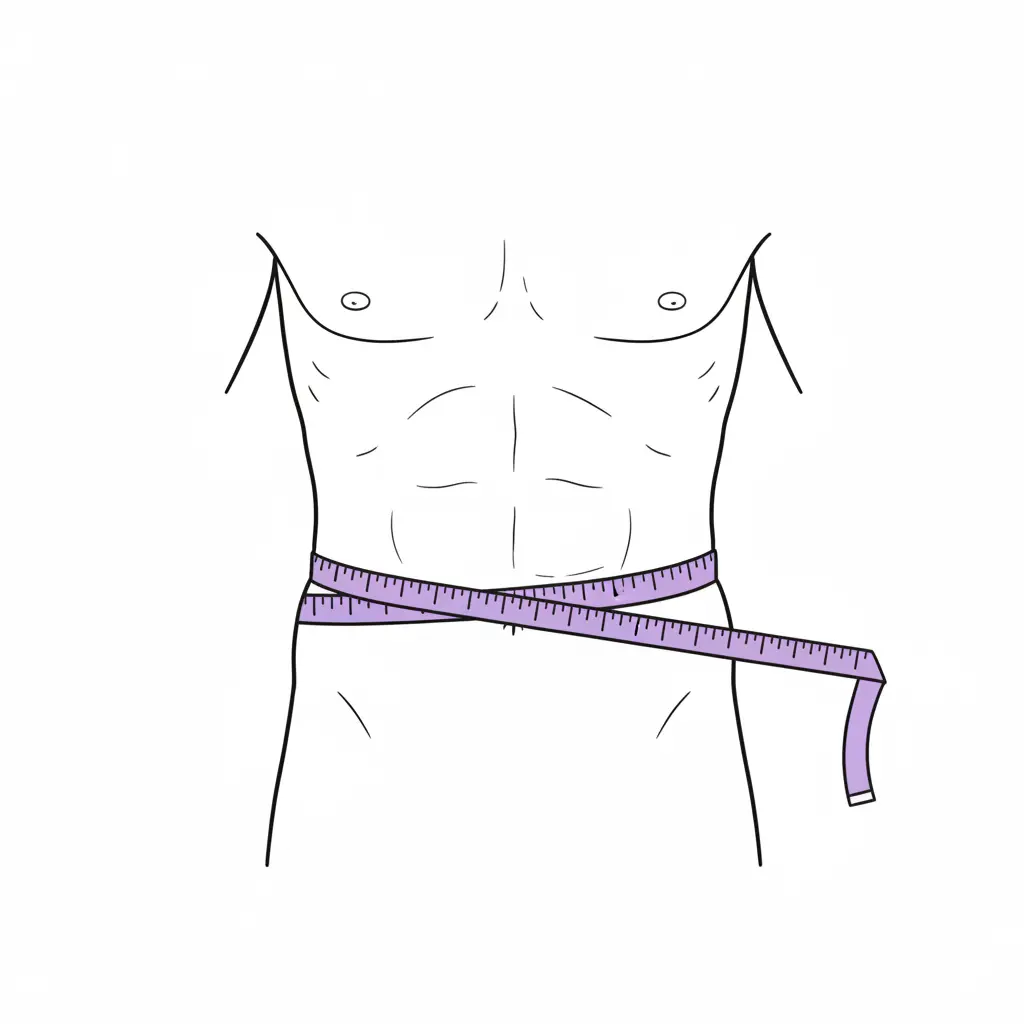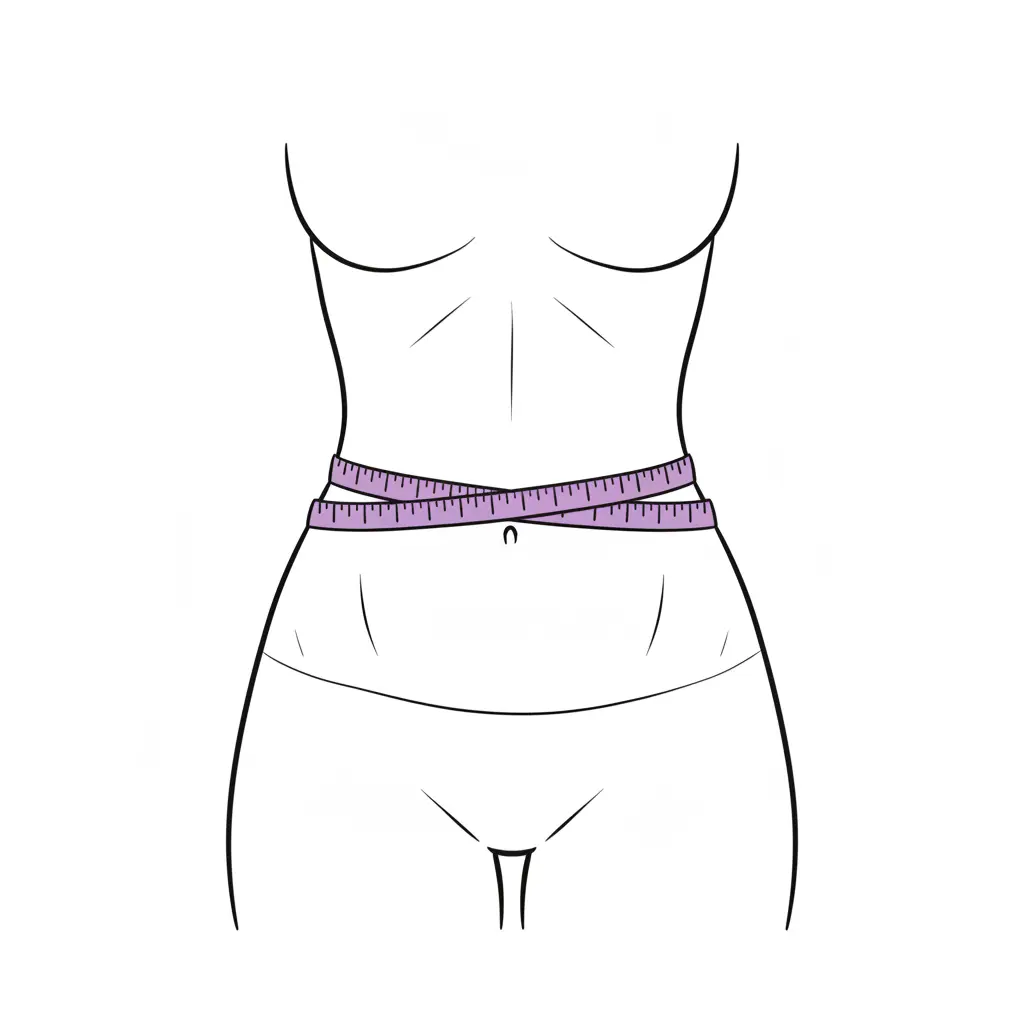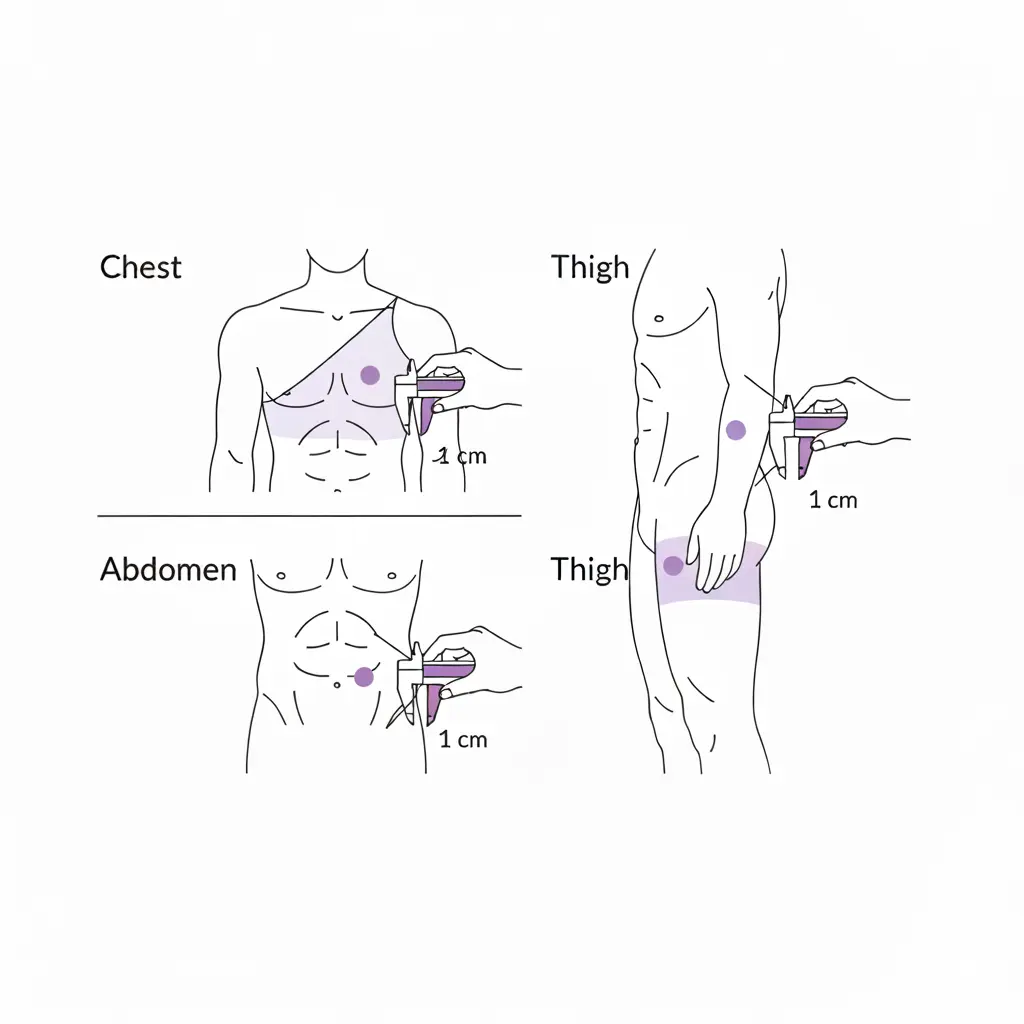Body Fat Calculator
Use our Body Fat Calculator to find out your body fat percentage instantly and understand how it impacts your health, fitness, and weight goals.
Enter Your Details
Toggle between metric (cm, kg) and imperial (inches, lbs). Inputs stay in sync automatically.
Your Body Fat Results
Body Fat %
Your body fat percentage
Category
Your fitness classification
Fat Mass
Total fat weight
Lean Mass
Muscle, bone & tissue
Health Insights
- Healthy range for your demographic: Calculating...
- Your result compared to population averages
- Personalized recommendations based on your results
What is Body Fat Percentage?
Body fat percentage is the proportion of fat relative to total body weight. Unlike BMI, it provides a more accurate assessment of body composition by distinguishing between fat mass and lean mass (muscle, bone, organs, and water).
Body fat exists in two forms: essential fat and storage fat. Essential fat is required for normal physiological functioning and is found in organs, muscles, bone marrow, and the nervous system. For men, essential fat is 2-5% of body weight, while for women it's 10-13%. Storage fat accumulates in adipose tissue and serves as an energy reserve.
Why It Matters: While BMI only considers height and weight, body fat percentage reveals what your body is actually made of. Two people can share the same BMI but have very different body compositions. Using a Body Fat Percentage Calculator gives a clearer, data-backed picture of your fitness and health level.
Body fat has essential roles such as energy storage, hormone regulation, and organ protection. However, excessive fat increases health risks, while too little can disrupt normal body function.
How to Use the Body Fat Calculator
Follow these steps to collect accurate data for our Body Fat Calculator:
Step 1: Enter Basic Information
- Select your gender (Male/Female)
- Enter your age (18-80 years)
Step 2: Choose Measurement Method
US Navy Method (Recommended)
- Requires: Height, Weight, Neck, Waist measurements
- Women also need: Hip measurement
- Best accuracy for home use
BMI Method (Quick & Easy)
- Requires: Height, Weight only
- Less accurate but convenient
Skinfold Method (Advanced)
- Requires body calipers
- 3 measurement sites: varies by gender
- Most accurate if done correctly
Step 3: Take Measurements
- Use measuring tape for circumferences
- Keep tape horizontal and snug
- Stand naturally, don't flex
- Click "📏 How to Measure" links for detailed guides
Step 4: Calculate
- Click "Calculate Body Fat"
- View your body fat percentage, category, and health insights
- Save or share your results if desired
Tip: For best results, measure consistently at the same time of day under similar conditions.
How to Measure for Body Fat Calculator
1. Neck Circumference (Men & Women)

- Stand upright, looking straight ahead
- Wrap the tape just below the Adam's apple (For women, the same position with the neck wrapped horizontally)
- Keep the tape horizontal and snug — not pressing into the skin
- Keep shoulders relaxed, avoid tilting your chin down or up
2. Waist Circumference — Men

- Stand relaxed, don't suck in your stomach
- Wrap the tape at the level of your belly button (navel)
- Keep the tape parallel to the floor and snug but not tight
- Exhale gently, then record the measurement
3. Waist Circumference — Women

- Locate the narrowest part of your waist (usually just above the belly button)
- Wrap tape horizontally and keep it snug
- Stand naturally — no tensing the abs
4. Hip Circumference — Women

- Feet together, standing straight
- Place tape around the fullest part of hips and buttocks
- Ensure tape is parallel to the floor and level front/back
5. 3-Site Skinfold (Men)

Measurement sites:
- Chest — diagonal fold, halfway between nipple and armpit
- Abdomen — vertical fold, 2 cm to the right of the belly button
- Thigh — vertical fold on front mid-thigh
How to measure:
- Pinch the skinfold using thumb + forefinger
- Place the caliper 1 cm below your fingers (not on the pinch point)
- Release caliper pressure slightly and read the number after 1 second
6. 3-Site Skinfold (Women)

Measurement sites:
- Triceps — vertical fold on back of upper arm, halfway between shoulder & elbow
- Suprailiac — diagonal fold above the hip bone, slightly toward the front
- Thigh — vertical fold on front mid-thigh
How to measure:
- Pinch the skinfold with thumb + forefinger and maintain the pinch
- Place caliper 1 cm below the pinch and read after 1 second
Health Risks of High Body Fat
Excess fat, especially visceral fat, increases risk for chronic diseases. This type of fat surrounds internal organs and promotes inflammation that can damage the body over time.
Cardiovascular Disease Risk
High body fat percentage increases risk of heart disease, hypertension, and stroke. It contributes to atherosclerosis (hardening of arteries) and can lead to reduced blood flow to vital organs. Studies show that body fat percentage has a stronger association with cardiovascular disease risk than BMI alone.
Metabolic Disorders
Excess fat accumulation is a major contributor to insulin resistance, which can lead to type 2 diabetes and metabolic syndrome. Even people with a normal BMI but a high fat-to-weight ratio ("normal weight obesity") are at greater risk of developing prediabetes and other metabolic issues.
Other Health Concerns
A higher proportion of body fat has been linked to greater chances of certain cancers (such as breast, colon, and liver), sleep apnea, joint strain from extra weight, and hormonal disruptions. It may also impair lung capacity and lower overall quality of life.
Important Note: These risks are cumulative and progressive. Maintaining a healthy body fat percentage through balanced nutrition and regular physical activity is crucial for long-term health and disease prevention.
Body Fat Percentage Standards
American Council on Exercise (ACE) Classification
The ACE standards help categorize body composition and assess health risk levels. You can use our Body Fat Calculator results to compare against these benchmarks.
Women's Body Fat Standards
| Category | Range (%) | Description |
|---|---|---|
| Essential Fat | 10-13% | Minimum for normal physiological function |
| Athletes | 14-20% | Optimal for athletic performance |
| Fitness | 21-24% | Good overall fitness level |
| Average | 25-31% | Typical for general population |
| Obese | 32%+ | Above healthy range, health risks increase |
Men's Body Fat Standards
| Category | Range (%) | Description |
|---|---|---|
| Essential Fat | 2-5% | Minimum for normal physiological function |
| Athletes | 6-13% | Optimal for athletic performance |
| Fitness | 14-17% | Good overall fitness level |
| Average | 18-24% | Typical for general population |
| Obese | 25%+ | Above healthy range, health risks increase |
Population Averages (US Data)
According to NHANES data (1999-2004), average body fat percentages in the United States are significantly higher than optimal ranges: Men average 23-28% body fat, while women average 35-41%, depending on age group.
Important: These standards are general guidelines. Individual variations exist based on genetics, ethnicity, athletic background, and other factors. Always consult healthcare professionals for personalized health assessments.
Calculator Methods Explained
US Navy Method
Accuracy: ±3-4% - Developed by the U.S. Navy, this method uses circumference measurements (neck, waist, and hips for women) to estimate body density and calculate body fat percentage. It's the gold standard for field body composition testing and requires only a flexible measuring tape.
Pros: Highly accessible, no special equipment needed, good accuracy for home use, quick to perform (2-3 minutes).
Cons: Can be affected by measurement errors, less accurate for very muscular individuals or those with atypical body fat distribution.
BMI Method
Accuracy: ±5-8% - A simplified formula that estimates body fat percentage from BMI and age using regression equations. This method is convenient but the least accurate of the three options.
Pros: Extremely simple, requires only height, weight, and age, useful for quick population-level estimates.
Cons: Cannot distinguish between muscle and fat, poor accuracy for athletes or elderly, assumes average body composition for given BMI.
Skinfold Method (Jackson-Pollock 3-Site)
Accuracy: ±3-5% - Uses specialized calipers to measure skinfold thickness at three specific anatomical sites. For men: chest, abdominal, and thigh. For women: tricep, suprailiac, and thigh. When performed correctly by trained professionals, this method can be very accurate.
Pros: Excellent accuracy when technique is proper, relatively inexpensive equipment, good for tracking changes over time.
Cons: Requires proper training and technique, difficult to self-measure accurately, results vary between testers, special equipment needed.
Choosing the Right Method
- For most people: The US Navy Method in our Body Fat Calculator provides the best balance of accuracy and convenience
- For athletes: Consider professional methods like DEXA or hydrostatic weighing for competition-level accuracy.
- For quick estimates: The BMI Method can provide rough estimates when other measurements aren't possible.
Important: Consistency in measurement method and technique is more important than absolute accuracy for tracking personal progress over time. Always use the same method under similar conditions for reliable trend analysis.